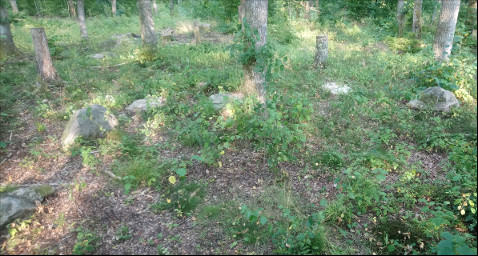Reconstructing Gothic, some say, involves a lot of extrapolation. Apart from Latin and Greek, there are not many sources of Gothic loanwords that are reasonably close to Gothic in place and time and that have a preserved corpus predating the Gothic. If there was, reconstruction would be based on interpolation which is more reliable than extrapolation. But there is Hebrew. Here are a few passages involving Gothic and Hebrew “ak” – a contrasting adverb or conjunctive, and the Gothic word for house “gards” compared with the Hebrew word for a temporary dwelling-place for guests “magor”.
𐌰𐌺 (ak)
— MS: Italy, 500 CE, text-type: Moesia 350 CE
Matthew 6: 18, except
ei ni gasaiwaizau mannam fastands ak attin þeinamma þamma in fulhsnja
Matthew 7: 21, but only
ni wazuh saei qiþiþ mis frauja frauja inngaleiþiþ in þiudangardja himine ak sa taujands yiljan
attins meinis
Matthew 9: 17, but rather
niþþan giutand yein niujata in balgins fairnjans … ak giutand yein juggata in balgins niujans
Mark 1: 44, but
saiw ei mannhun ni qiþais yaiht ak gagg þuk silban ataugjan gudjin
John 16: 26, 27, for/since
ni qiþa izyis þei ik bidjau attan bi izyis ak silba atta frijoþ izyis unte jus mik frijodeduþ
Ephesians 2: 9, 10, for/for indeed
ni us yaurstyam ei was ni wopai ak is sijum taui
אך (ach)
Genesis 9: 4, but/only/except — MS: 1 000 CE, text-type: 600 CE Masoretic
נתתי לצם את-כל אך-בשר בנפשו דמו לא תאכלו
Leviticus 21: 23, but/only — MS: 1 000 CE, text-type: 600 CE Masoretic
ומן-הקדשים יאכל אך אל-הפרכת לא יבא
Isaiah 45:14, for/for … except — MS: 200 BC Dead Sea scroll
ואליכי יתפללו אך בכי אל ואין עוד אל והים
𐌲𐌰𐍂𐌳𐍃 (gards) masculin noun
— MS: Italy, 500 CE, text-type: Moesia 350 CE
Matthew 5: 15, house/room
jah liuteiþ allaim þaim in þamma garda
Matthew 9: 6, home/place
urreisands nim þana ligr þeinana jah gagg in gard þeinana
Mark 3: 25, household
jah jabai gards yiþra sik gadailjada ni mag standan sa gards jains
מגור
(magor) masculin noun, related to גר (geir) sojourner and גור (gour) sojourn
Genesis 12: 10, sojourn — MS: 1 000 CE, text-type: 600 CE Masoretic
וירד אברם מצרימה לגור שם כי-כבד הרעב בארץ
Genesis 37: 1, sojourning-place — MS: ca 50 BC DSS
[וישב יעקב ב]ארץ מגורי אביו בארץ [כנען]
Psalm 55: 16, camps?, Greek has παροικίαις — MS: 1 000 CE, text-type: 600 CE Masoretic
ירדו שאול חיים כי-רעות במגורם בקרבם
Haggai 2: 19, barn/granary — MS: ca 50 BC DSS
[העוד הזרע במ]גורה [ועד הגפן והתאנה והרמון ועץ הזית לא] נשא [מן היום הזה אברך]

